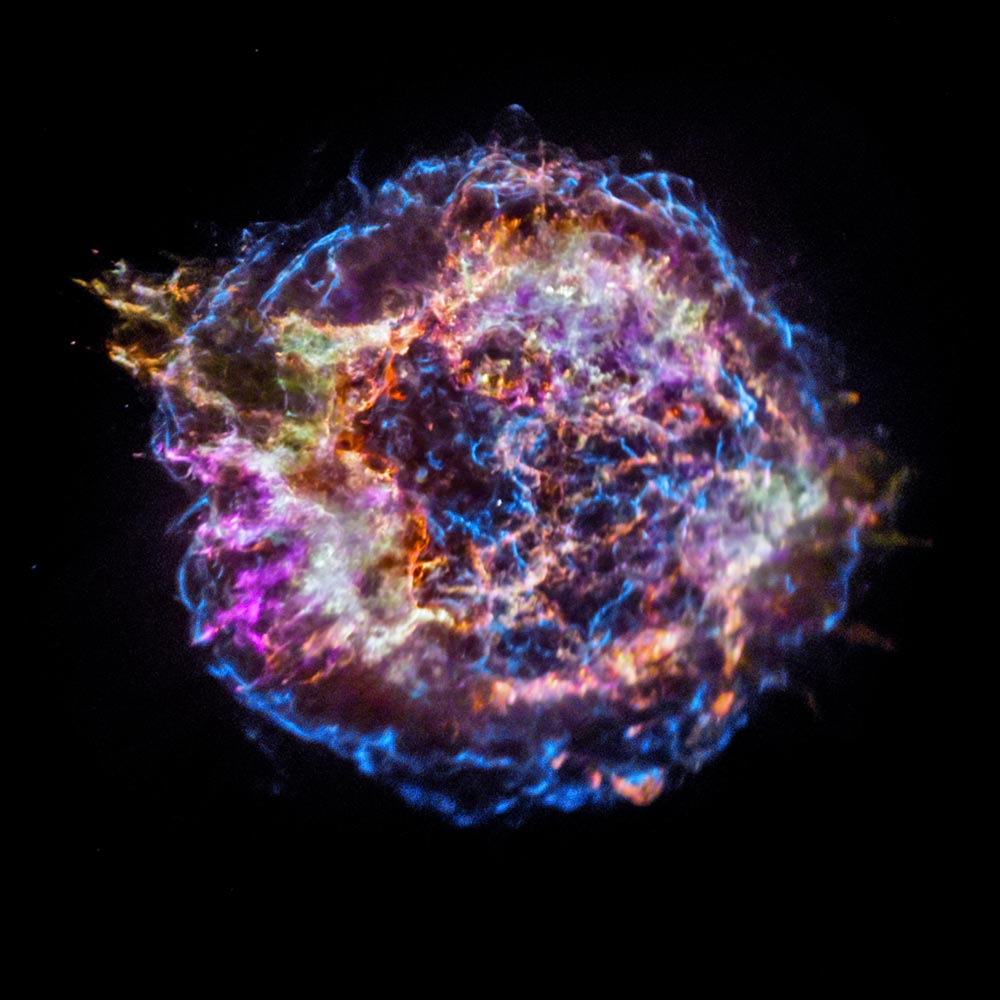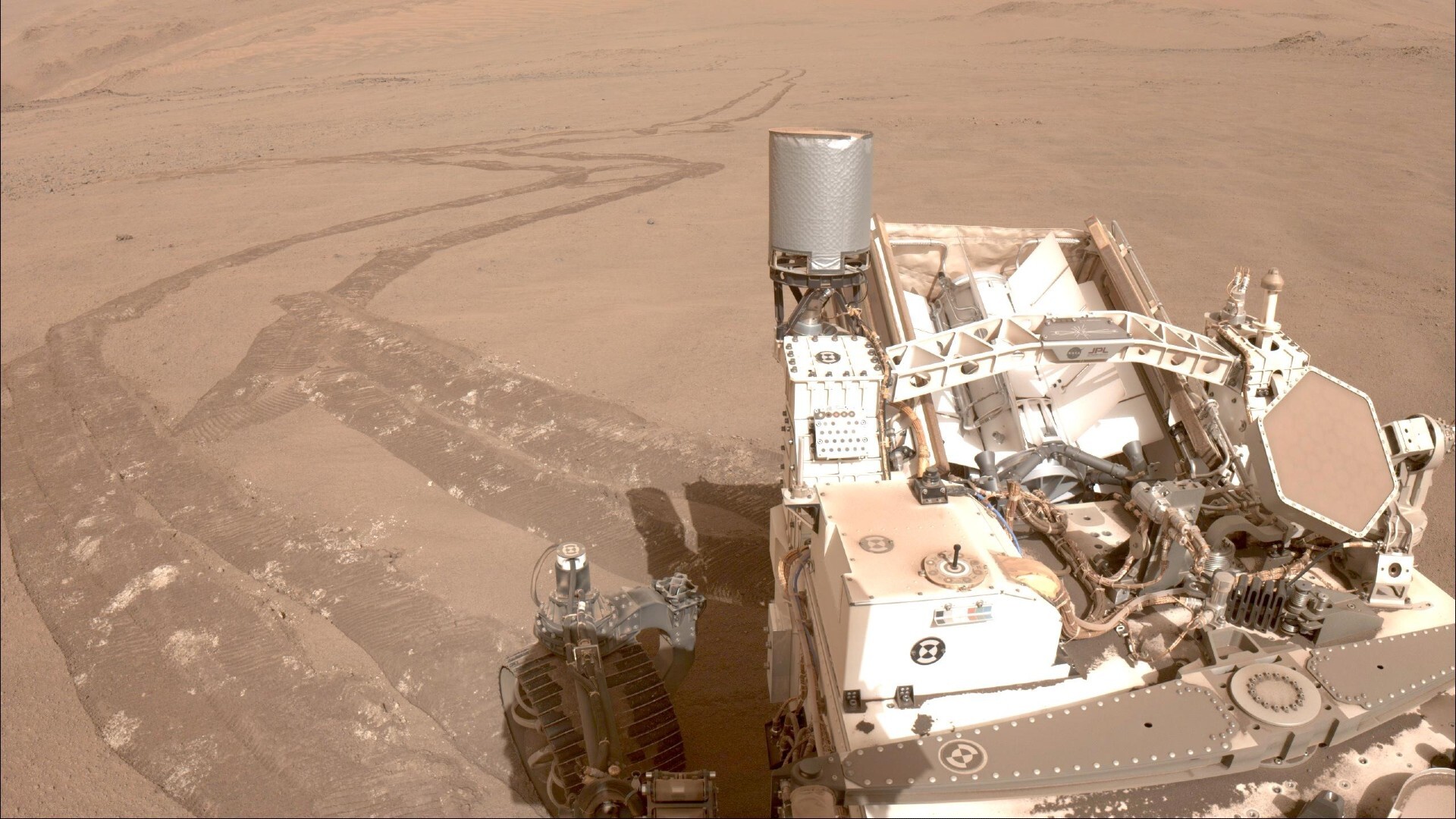NASA and Navajo Nation Partner in Understanding the Universe

When you pick out the stars that make up the Big Dipper, do you see a cluster of glowing balls of plasma or a pattern of gemstones carefully arranged by holy figures? For students in the Navajo Nation, the answer may well be both.
That's because of a 14-year-long partnership between NASA and the Navajo Nation that helps teachers present cultural and scientific knowledge on an equal footing. Leaders of that partnership are busy developing their third set of educational activities, which will explore how the universe began. That collection follows two previous booklets and complementary teacher workshops, as well as a summer camp, all of which draw parallels between Navajo and scientific understandings of Earth and the world around us.
"[The Navajo people's] cultural, traditional ways of knowing are inherently scientific … that's a really big message," Daniella Scalice, a non-native co-founder of the partnership and the education and communications lead at the NASA Astrobiology Program, told Space.com. "There is no difference between traditional cultural ways of generating knowledge and the ones that science uses." [Towering Rock Once Hidden Beneath Earth Seen from Space]
The team's existing booklets focus on two sets of topics: the stars, particularly how they form and die, and on the moon, including its cycle of phases and its tidal relationship with Earth. All of the activities the team developed are built around Diné traditions (as the Navajo people refer to themselves), and each booklet of activities begins with a formalized statement of who the Navajo are and how they live their lives.
That focus is in part because of how the project began, at a time when Navajo leaders were worried about tribe members slipping away from their language and culture after decades of cultural suppression by American education and assimilation policies. So the team started from a place of wanting to build an educational curriculum around those Diné principles.
"We went back to the guidance that we had in our longstanding tradition of using the stars as guides to life," Angela Barney Nez, a partnership co-founder and executive director of the Diné Bi Olta School Board Association, told Space.com. "Prescriptions to life are written in the stars."
So the team developed activities that spoke to Navajo traditions first, then incorporated Western science's way of seeing the world and the state-mandated education standards that schools on the reservation are required to meet.
Breaking space news, the latest updates on rocket launches, skywatching events and more!
That's not the norm for science-education-outreach programs. "A lot of people are working in what I've come to call STEM-only or STEM-first paradigms in terms of STEM programs for native youth, and we have not been working in that paradigm," Scalice said. "I think what's important for people to understand about this is that such an approach, asking if you're even interested in this, recognizes and respects tribal sovereignty and self-determination, and it requires the science community to put away its hubris, put it to the side and express in its place humility."
One of the most popular activities is built on Navajo associations with each of the four cardinal directions, the seasons and four Spiritual Ones. The scientific view of a star's life follows the same four-step cycle as is described by Diné beliefs: from a nebula of gas to a newborn star with a protoplanetary disk to a mature star like our sun to an exploded supernova spreading heavy elements throughout the neighborhood.
That's just one of the parallels the team noticed as they consulted NASA scientists and Navajo medicine people in turn, ferrying knowledge back and forth between the two knowledge systems. "Every step of the way, it seemed like we were reinforcing each others' information," Barney Nez said.
In addition to the educational activities, the partnership also coordinates a summer camp for students, bringing them to sacred sites within and surrounding the Navajo homeland, like Canyon de Chelly and Chaco Canyon. There, scientists and Navajo medicine people and herbalists teach the students about the traditional and scientific importance of these locations. [Chaco Canyon Photos: Amazing Ruins from an Ancient World]
Those visits are how Dana Desiderio first got involved in the partnership, tagging along on a visit to Canyon de Chelly, where her passion for rocks was joined by new knowledge about the site's importance to her cultural identity as Diné. She became a camp counselor for the program and is now a graduate student at Navajo Technical University studying Diné culture and language.
"Navajos are natural scientists in so many different ways, and you see it spelled out in the culture," Desiderio said. "We see how indigenous knowledge is already present in many scientific discoveries that we know today."
But for the purposes of the booklets, it isn't just a matter of indigenous knowledge, it's a matter of exclusively Navajo traditions. All along, the team has been vehement that the project not try to meld distinctive cultures of different tribes. "We will keep it authentic and we will keep it original," Barney Nez said, noting that this mindset began at the program's outset. "We will keep this as Diné as possible."
That doesn't mean other tribes can't build their own such programs based on their own traditions. And with the partnership between NASA and the Navajo Nation still close after more than a decade, the team members think it's time to leave behind their original policy of staying quiet, instead stepping out to share their work with others who might be interested in building similar partnerships.
"Now we're at a point where we feel perhaps others could get some value from seeing what we've been up to," Alice Carron, a non-native co-founder of the program, told Space.com. "We hope we're doing something right, we believe we're doing something right."
Desiderio, who grew into the program as she grew into her Diné identity, certainly believes so. "We're finding all of these little scholars, all of these little indigenous scholars being inspired by their own community's lessons," Desiderio said. "Indigenous strength and spirit is being awoken in these little kids and just to see that happen is very moving and beautiful."
Email Meghan Bartels at mbartels@space.com or follow her @meghanbartels. Follow us on Twitter @Spacedotcom and on Facebook.

Meghan is a senior writer at Space.com and has more than five years' experience as a science journalist based in New York City. She joined Space.com in July 2018, with previous writing published in outlets including Newsweek and Audubon. Meghan earned an MA in science journalism from New York University and a BA in classics from Georgetown University, and in her free time she enjoys reading and visiting museums. Follow her on Twitter at @meghanbartels.
